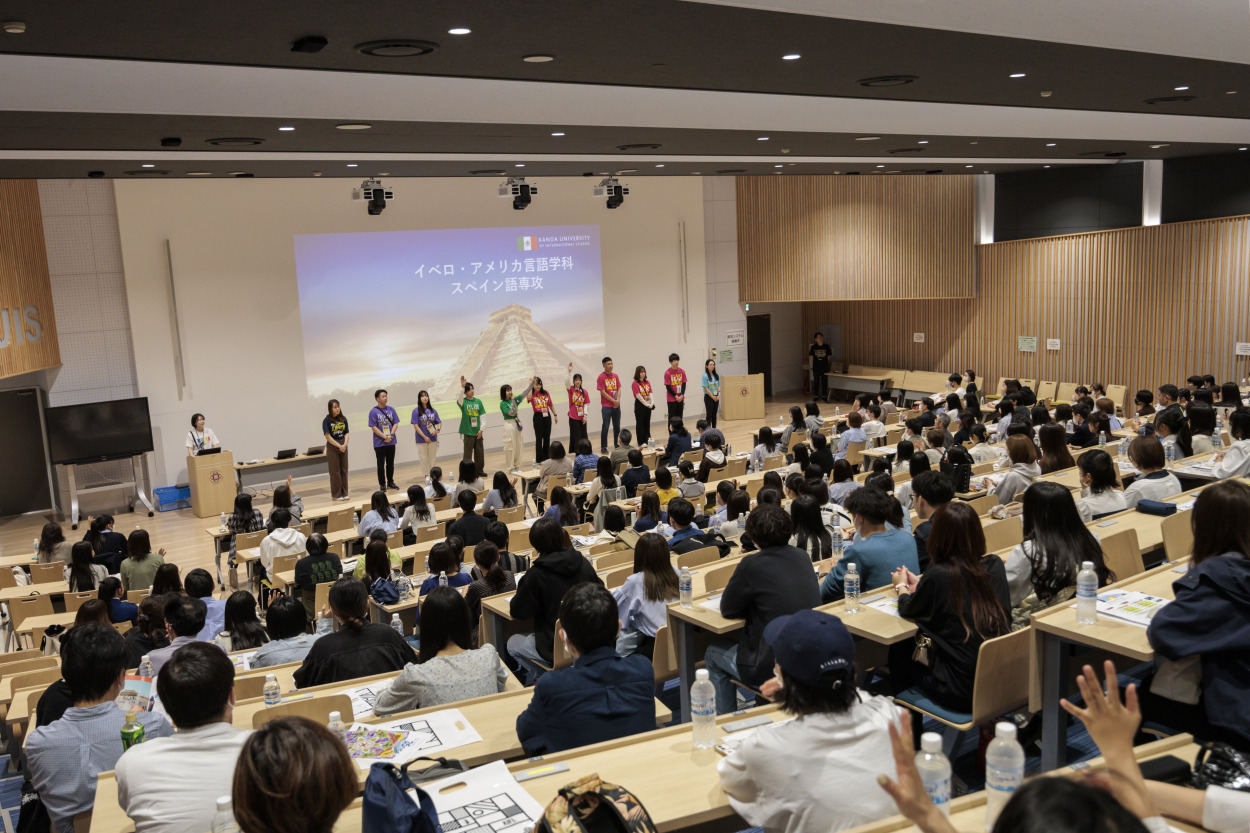STUDY
Learning Japanese Abroad
2019/02/17

Today’s blog is about Japanese education overseas!
People often ask me, “How did you study Japanese?” I studied Japanese at my university with teachers who came from Japan.
In America, around 70,000 students study Japanese at universities. Japanese is the 5th most taught language in the USA, behind (1) Spanish, (2) French, (3) American Sign Language, and (4) German.
In the USA, beginner Japanese textbooks include a lot of English! Students have to start with hiragana before learning katakana and kanji. In my textbook, our vocabulary pages looked like this:
| わたし | watashi | I, me |
| は~です | wa ~ desu | am |
| わたしの | watashi no | my |
| なまえ | namae | name |
| げんきですか | genki desu ka | How are you? |
| はい、げんきです | hai, genki desu | I’m fine. |
At first, there is no kanji! The first lesson only had hiragana and English. In the first class, we learned to write あいうえお. In the second class, we learned かきくけこ. We used Japanese-style worksheets with big squares to practice writing each hiragana many times.
After we had learned hiragana, the vocabulary pages changed a little bit. Can you see the difference? ↕
| おかあさん | お母さん | Mother |
| おとうさん | お父さん | Father |
| たべます | 食べます | to eat |
| いきます | 行きます | to drink |
| げつようび | 月曜日 | Monday |
| かようび | 火曜日 | Tuesday |
Now, we can see some kanji characters! In the first term, we only learned about 15 kanji: the numbers 一 to 十, plus basic characters such as 人, 食, 日, 本, 行, etc. After 1 year of studying Japanese in college, I could read and write about 50 kanji characters.
Kanji are more difficult than hiragana and katakana, because they have on-yomi and kun-yomi. For me, reading kanji was the most difficult part of Japanese. For example, think about the kanji 「月」. There are many readings, right? There’s「いちがつ」and「せんげつ」and「まいつき」and「にっしんげっぽ」. We have to memorize a lot of information to read Japanese!
So, that’s a little introduction about studying Japanese in a US university classroom. We study the basics slowly, and learn the alphabet, pronunciation, and vocabulary. After about 1 year, students can do a self-introduction, make some sentences, and ask basic questions in Japanese.
At KUIS, many of our students want to be teachers. Usually, they want to teach English in Japan, or teach Japanese in a different country. If your dream is to live abroad, teaching Japanese is a job you can do in many countries!
That’s it for today– thank you for reading!




